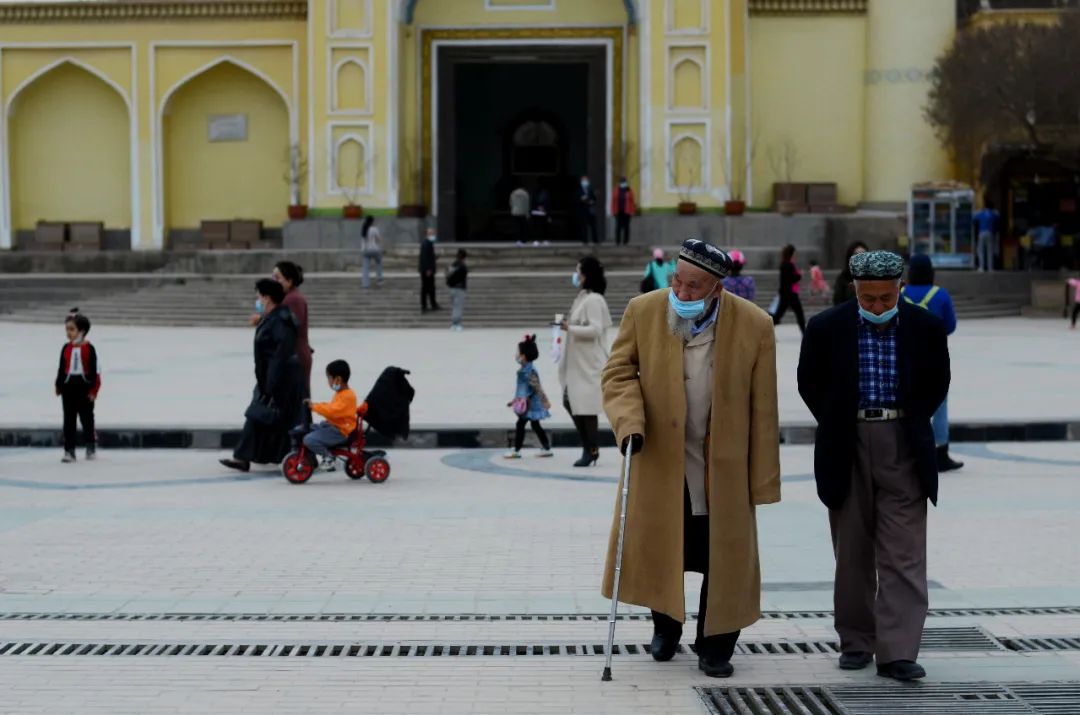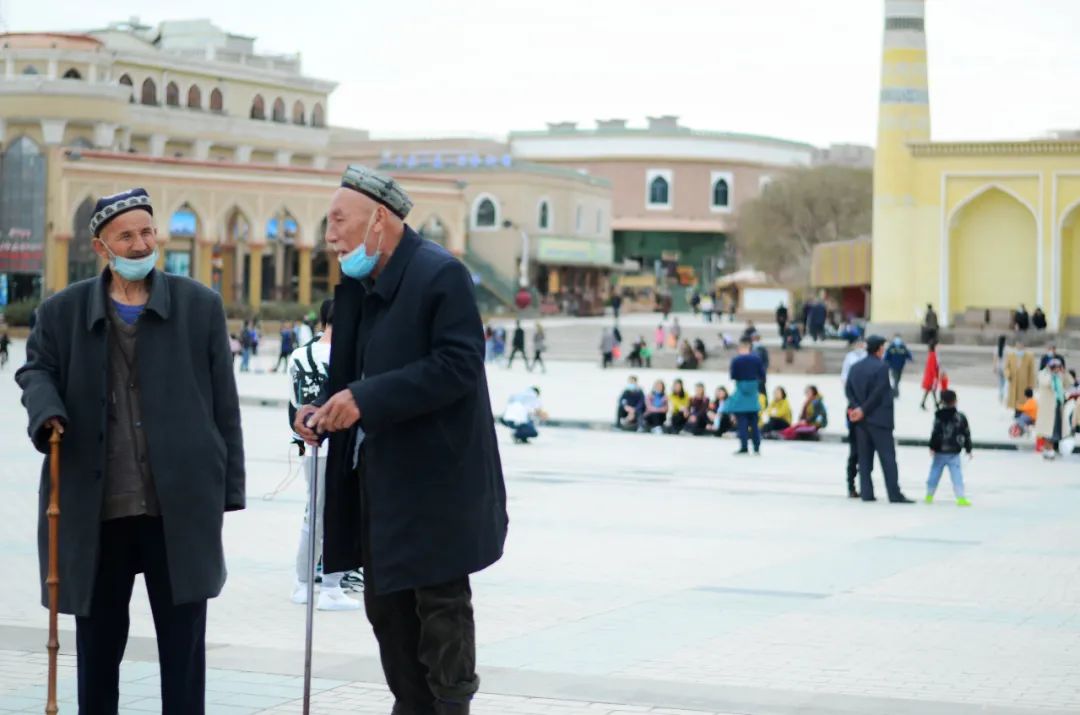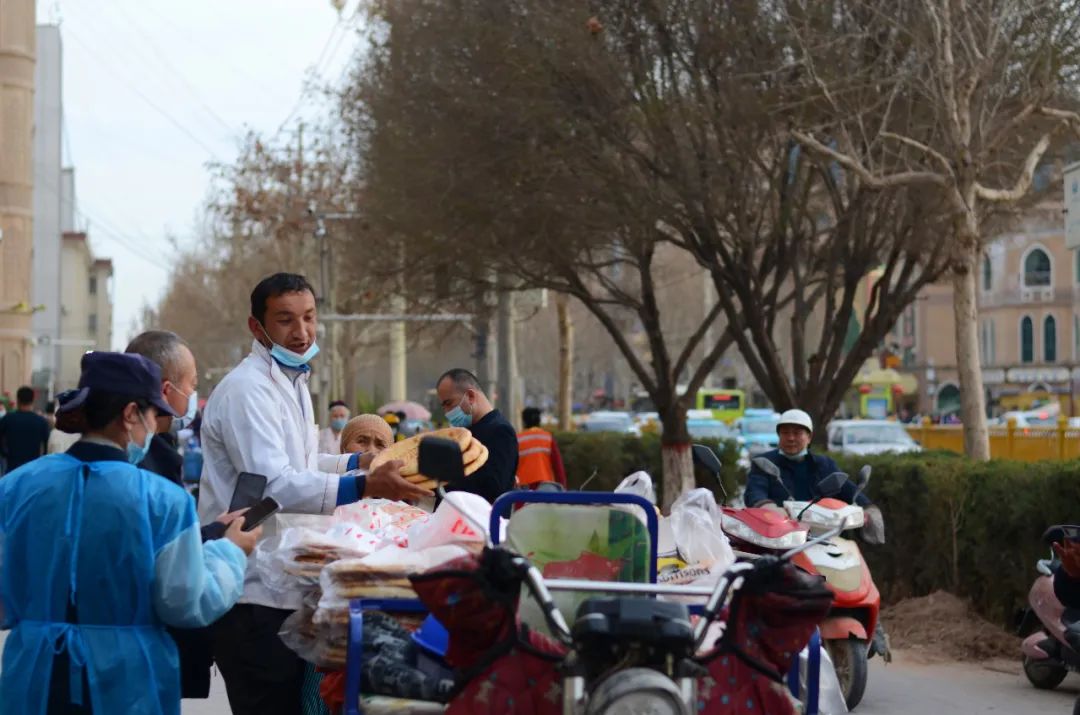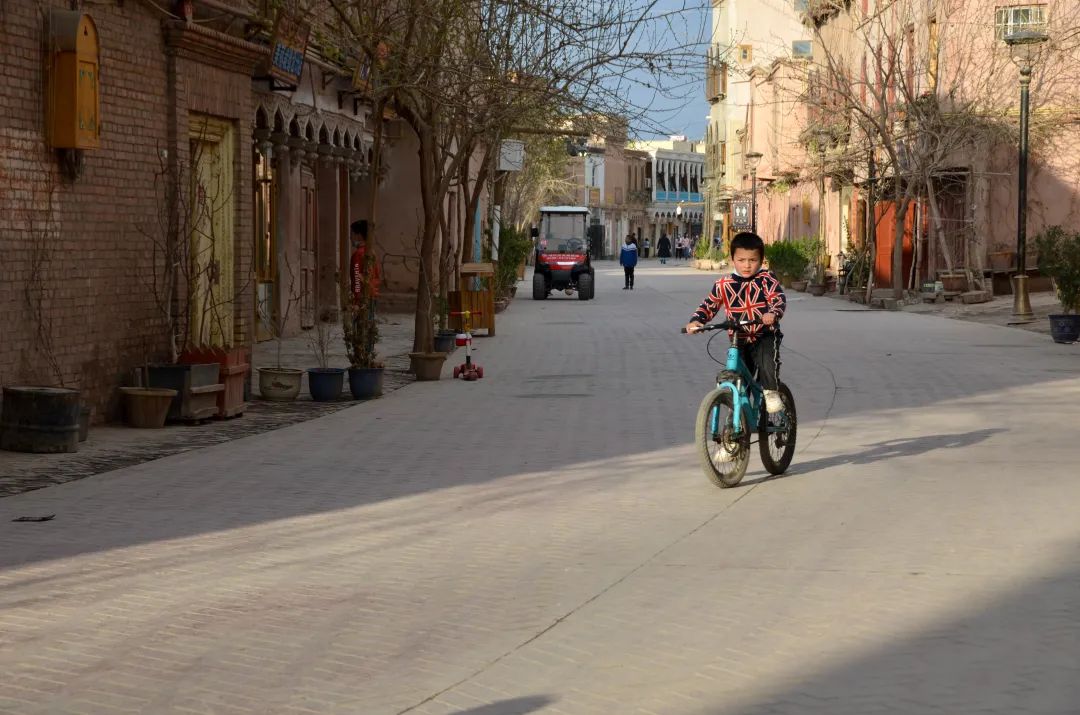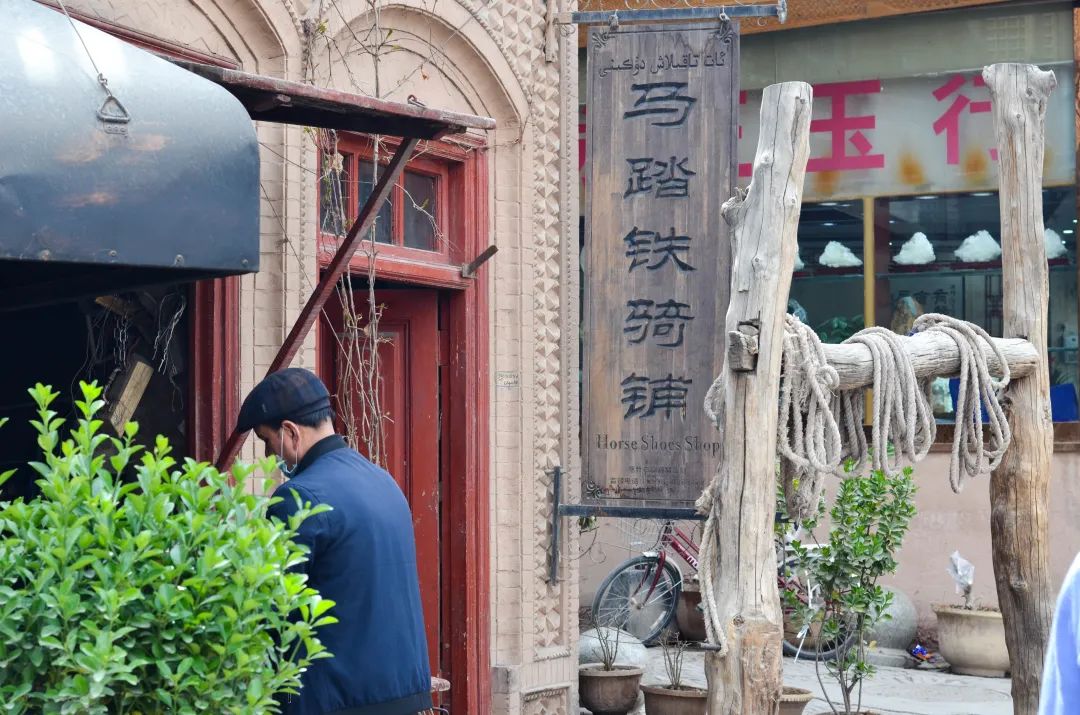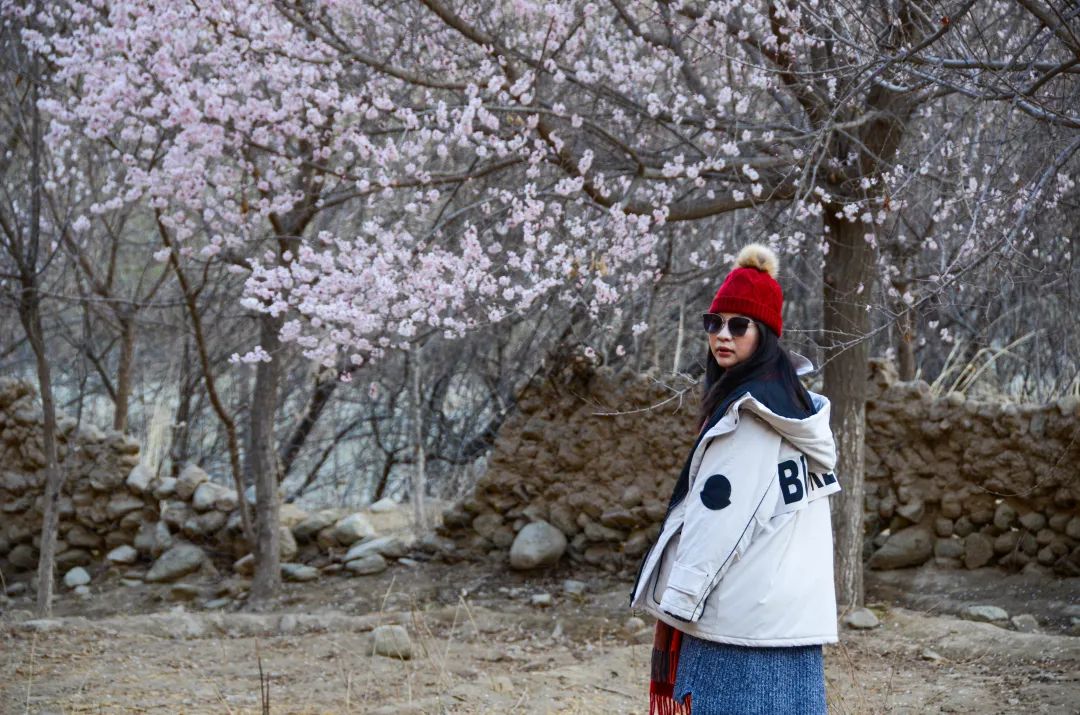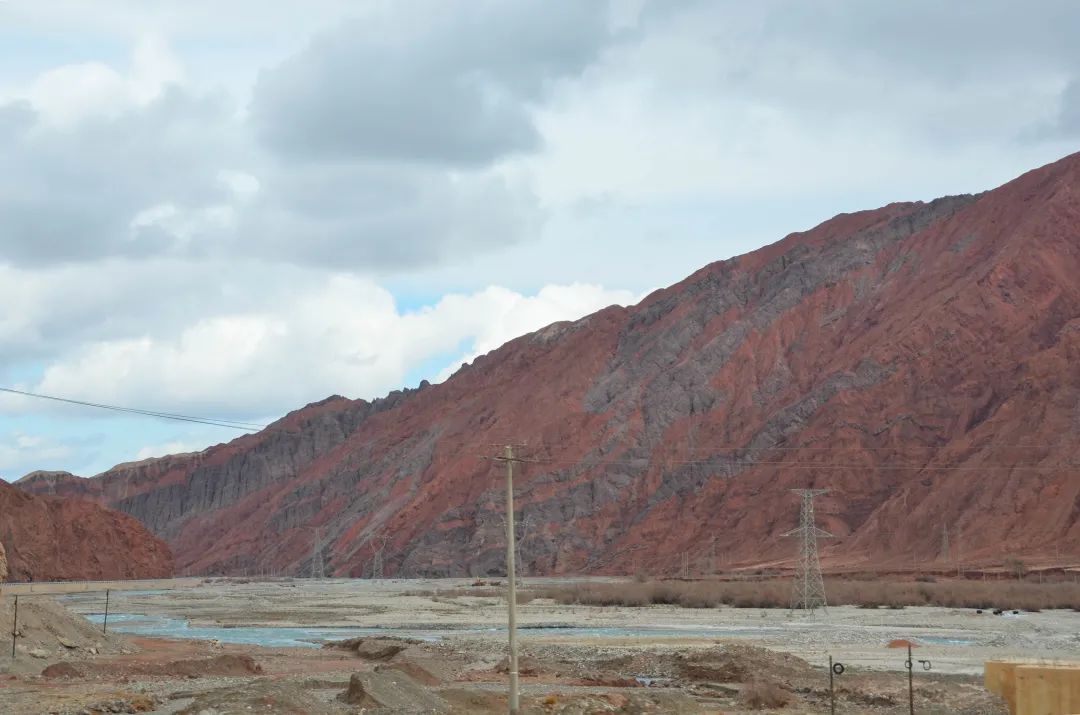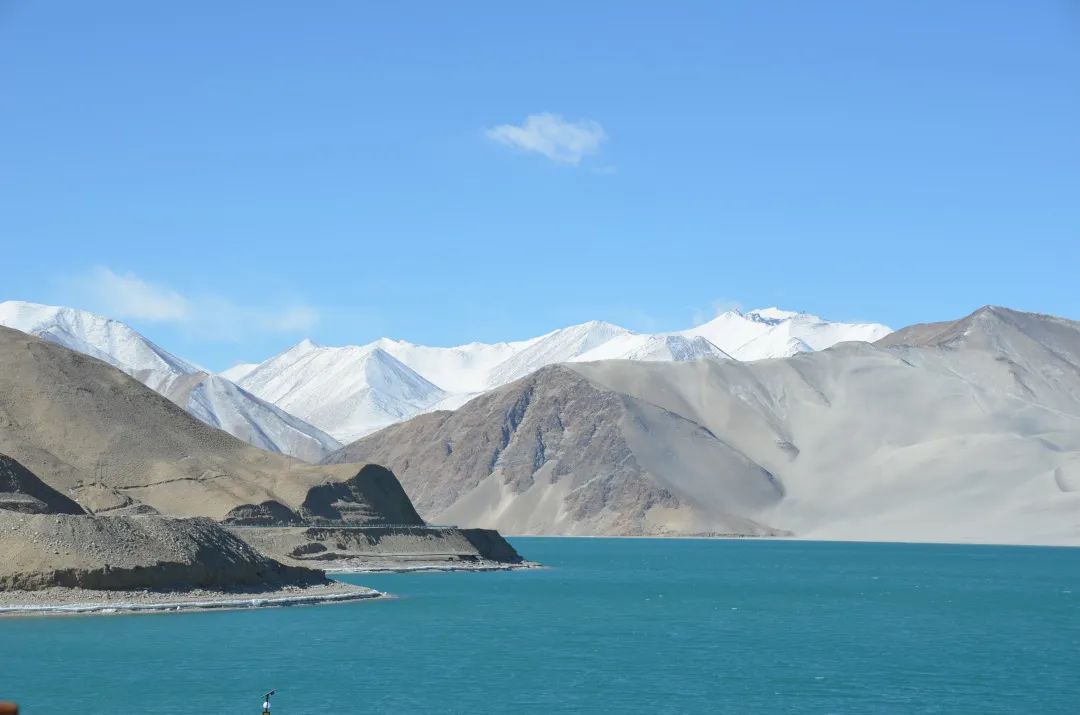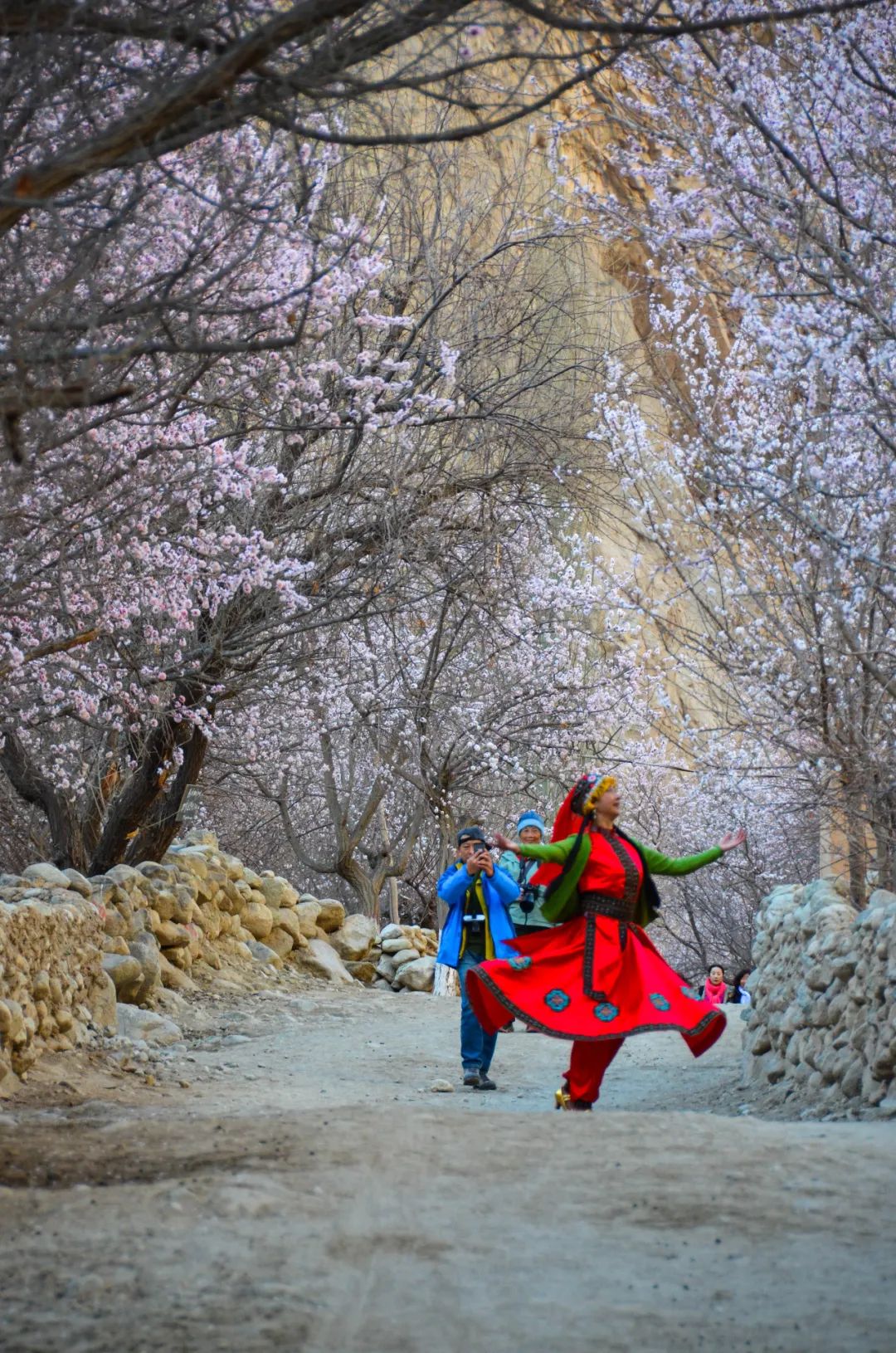Preface: This is an old article. When I read it, I found some errors and omissions, so I rearranged the pictures and text format and published it again. I strive to make it perfect and also serve as a record. I recently reread "The Kite Runner" and found that Kabul in the 1970s had many similarities with the old city of Kashgar, and I tried to look at this old city buried in the wind and sand from different angles.
The daytime in Kashgar, which is two hours behind in time difference, is especially slow. In a cafe in the corner of the ancient city, I can make a pot of tea, bask in the sun, play with the parrots, and watch the time slip through my fingers little by little, without any trace of it at all. I am anxious and want to stay like this forever, watching the people coming and going at dawn and dusk, and savoring this city buried in the wind and sand.
Kashgar is a very important part of the To Do List. If it were not for "Happy Flying", it might have been delayed for several years. If you want to understand Xinjiang, you have to start from southern Xinjiang. It is said that southern Xinjiang depends on its customs. These thousands of customs have been developed over thousands of years. Precipitation is already diverse, integrated but also divided.
Half city with wind and sand, half city with style

Kashgar has the southern Tianshan Mountains lying in the north, the Pamir Plateau in the west, the Karakoram Mountains in the south, and the Taklimakan Desert in the east. The humid air from the Indian Ocean cannot reach it, and the cold current from the Arctic Ocean cannot penetrate. It is a complete wilderness. .
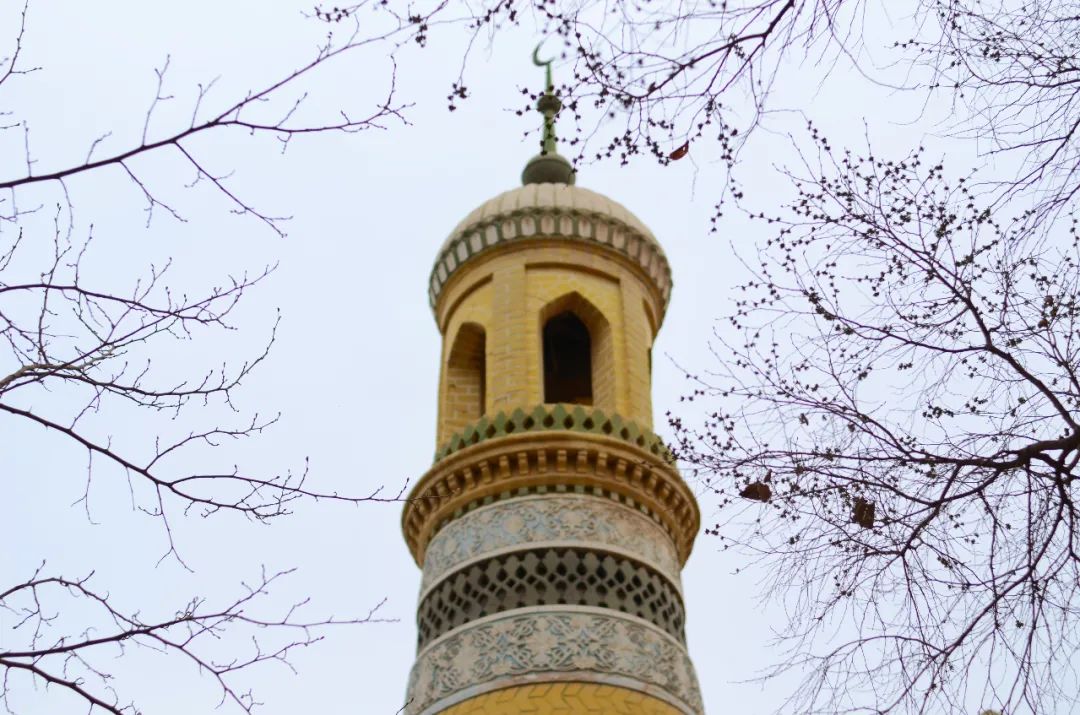
After being separated by thousands of mountains and rivers, the climate, life, and even the appearance of the people in Kashgar are different from those in most parts of the motherland. Coming to Kashgar feels like being in a foreign land. Before that, the impression of Xinjiang was that of the Uighur nation who were good at singing and dancing, fertile land full of fruits and vegetables, and endless mountains, forests and grasslands. I know that Xinjiang is very big, so big that it doesn’t include free shipping. From Altay in the north to Kashgar in the south is equivalent to Guangzhou to Beijing. Xinjiang is also very beautiful, with snow-capped mountains, grasslands, mountains, forests and deserts. Xinjiang is warm and rough...
If every city is a dictionary, then Kashgar should be a dictionary. Rich history and culture overflow every street. You don’t need to go to the museum to explore its secrets. Its ancient atmosphere can be found in every breath of ordinary life. . More than 2,000 years ago, there were written records of Kashgar. It was the land of the thirty-six countries in the Western Regions of Qin and Han Dynasties, and it was an indispensable link in the Silk Road.
When I came to Kashgar, I couldn't escape from visiting the ancient city, sitting in a century-old teahouse, and visiting the Id Kah Mosque. I spent two days touring the old city of Kashgar and the Id Kah Mosque. All over.









The ancient city of Kashgar that we see today has been renovated. At that time, it was considered that the wood and earth and brick-earth structures of the old houses were not earthquake-resistant and had safety hazards such as fire protection, so the original site was decided to be renovated. The construction workers took the drawings and visited residents one by one to do the work and revise it over and over again. Strive to preserve the lives of indigenous peoples to the greatest extent possible. Because of this persistence, the ancient city of Kashgar is the most lively ancient commercial city I have ever seen. On one side is a commercial street full of tourists, and on the other side is the quiet and beautiful fireworks years. Walking through the alleys of the ancient city is like opening blind boxes, full of surprises.
The doorway is like a shuttle. When you go up the steps and pass through the doorway, you will find another peaceful world. Women are talking, old people are sunbathing, and children are chasing and playing. When you turn the corner, you may encounter the chasing children. Just now A woman returning from shopping for groceries, or a neighbor having afternoon tea.
The older generation of aborigines basically cannot speak Chinese and can only communicate through body language. Children are much bolder and can use the Chinese they learned in school to say "hello", "goodbye" and "there is no road here". He will complain to you in frustration about which child he was bullied by. Now is their most innocent and beautiful time. In their world there are only relatives, playmates and the knowledge learned in school. There is not much desire in their clear eyes, only ignorant longing. Most of the children here have not been poisoned by electronic products. Their toys are still the card games we used to play when we were young. A group of friends gathered around to play cards, or they chased each other on small bicycles, or they chased each other through the city in high heels worn by adults. To the end of the city...
At the entrance of the Id Kah Mosque, there are a group of old men wearing cuckolds sitting under the pear tree and chatting every day. In the past, only imams who had been to Mecca could wear cuckolds. Nowadays, older people with more seniority will do so. Hat, this is a status symbol.

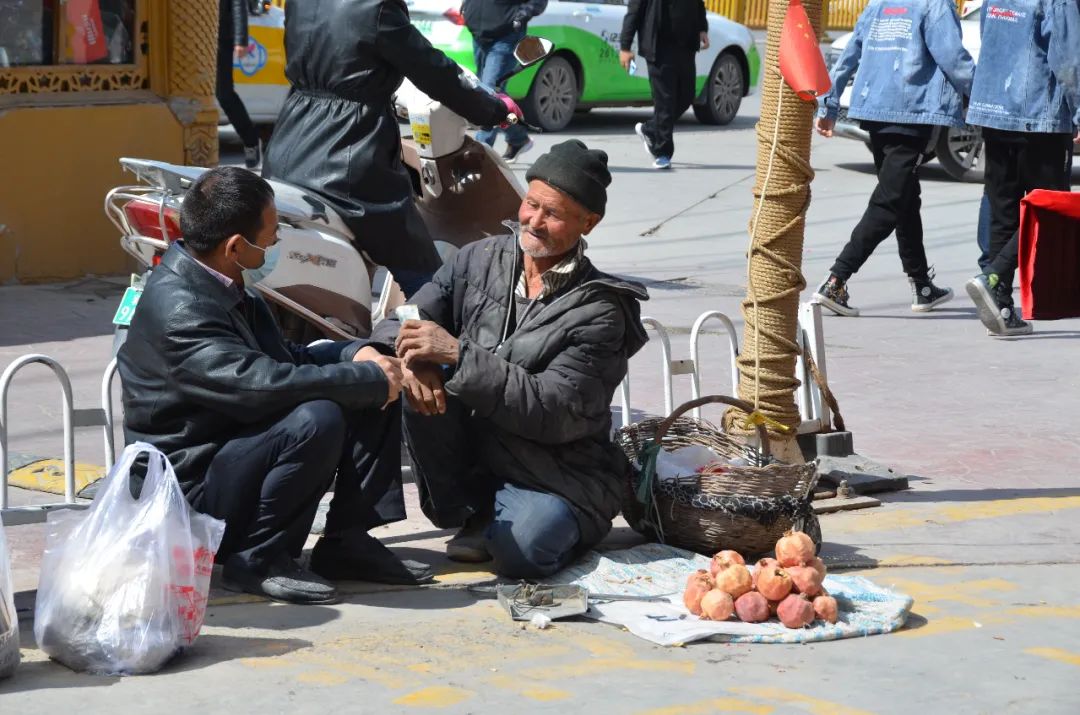

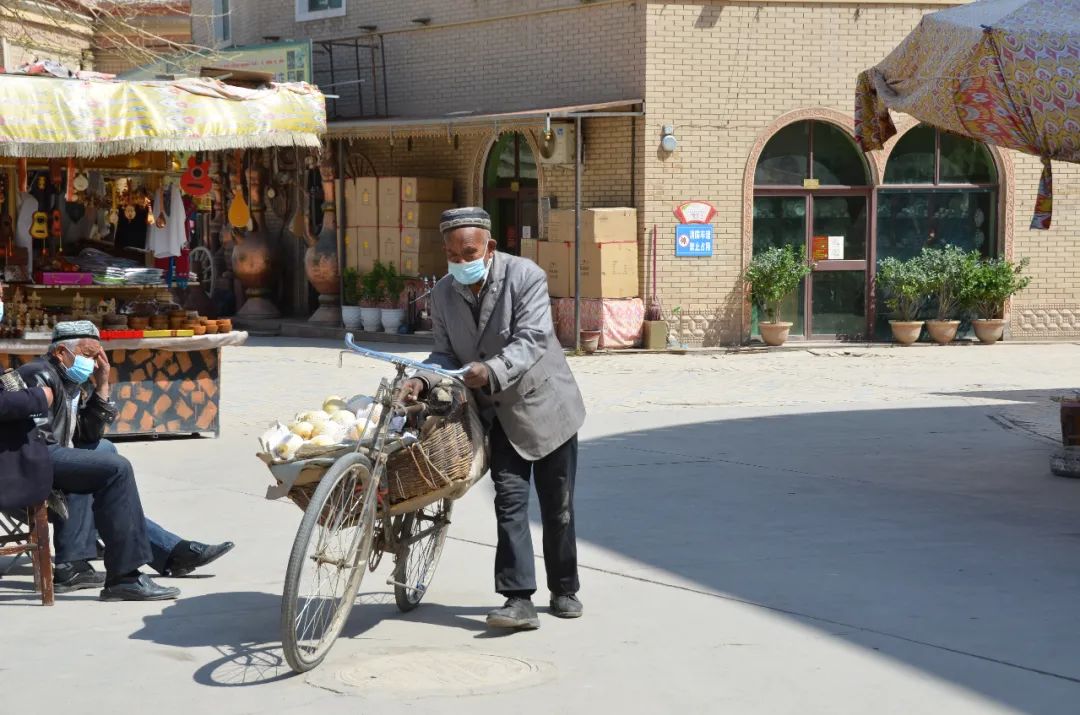



The sun in the spring is so warm that it makes people feel lazy. Maybe they are old friends who have been together since childhood. There are always endless topics to talk about, from the entrance of the mosque to the old teahouse, listening to music and dancing, or chatting over tea. The afternoon in Kashgar is very pleasant. I order a pot of tea and some snacks in an old teahouse, face the sunshine, listen to the old artists humming and singing, and watch the dancers dance. I don't envy the powerful or the gods.
Glory and tragedy

The original intention of choosing to visit southern Xinjiang at the end of March was to visit the Tasha Ancient Road, which is full of apricot flowers. This stunning cliff road, the Tasha Ancient Road leads from Ta County to Yarkand. It is a small branch of the Silk Road. It is said that it was also The path Master Xuanzang walked from Congling to Wuli Kingdom. From Ta County to Yarkand, all the way through Tar, Datong and then to Yarkand, along the Taxkulgan River in the hinterland of the Kunlun Mountains, passing through snow-capped mountains, plateaus, river valleys, villages, and from cliffs to deserts to oasis, all in one day. Experiencing different landforms inside is overwhelming. The driver could not be infatuated with the scenery on both sides. This road carved into the cliff was in danger of falling rocks at any time. As the lead driver, the driver was very nervous the whole time, staring ahead and paying attention to the falling rocks, and he was able to pass smoothly. What a blessing from God.
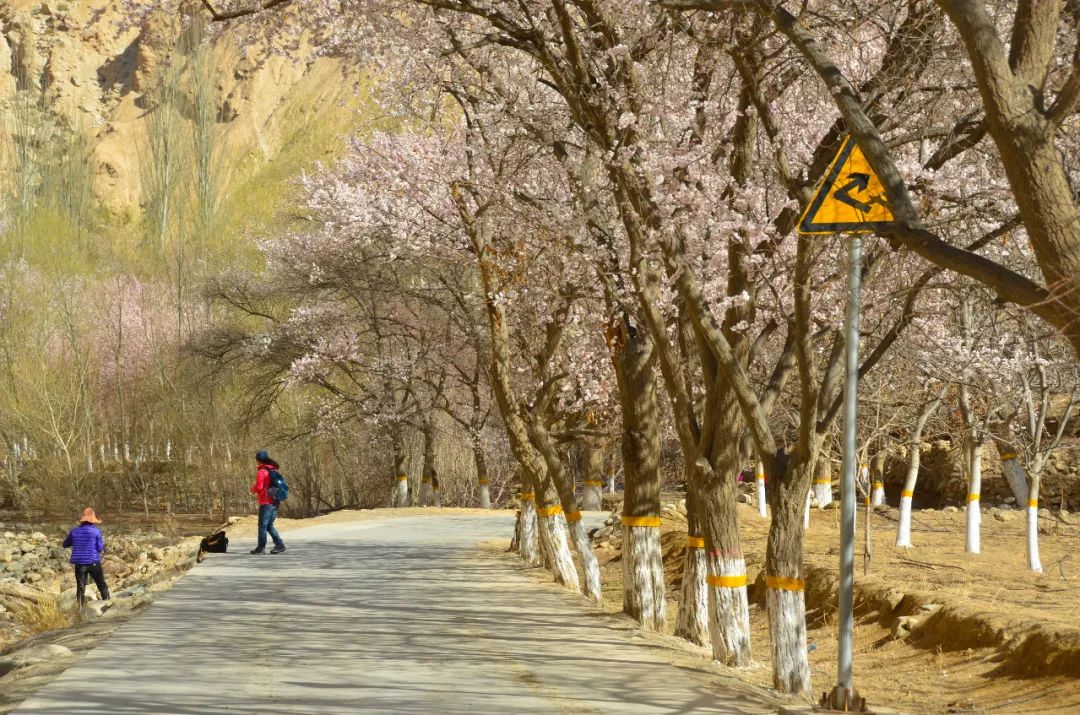


Master Yin, who drove for us on this trip, is an authentic Central Plains person. He has been in Kashgar for more than 30 years and has completely adapted to the climate and life in southern Xinjiang. When talking about the changes in the past 30 years, I was full of regrets. At that time, my livelihood was cut off due to floods in my hometown. I heard my elders say, "Kashgar is very good. Come and make a living." So I took the whole family on the train and set off from home. , arrived in Kashgar after traveling for several days. “I was dumbfounded when I got off the train. This place is so poor. There is only one road in the whole city, and donkeys pull carts.” “I wanted to go back at that time, but I didn’t have the money to buy a return train ticket.” In this way, Master Yin took his family to Kashgar and took root.
"It was really bitter. Kashgar at that time was full of wind and sand, there was no food, the language was not clear, and the local residents were very xenophobic."
"In order to support my children, I did everything. I worked in the Corps to farm, built roads, set up a stall selling late-night snacks...and then drove."
"In those days, the Han people would unite to find work and food, and they would also pick up dead cattle and sheep. The local residents would curse when they saw it, but there was nothing they could do. They were really hungry."
"Fortunately, things are getting better now. I am happy to see my grandchildren."



The team leader, Sister Fu, is a descendant of educated youth. Her parents responded to the country’s call and came to the Northwest and have stayed ever since. "We educated youth family members are very united. As long as there is a festival at home, everyone will come to help." There was a power outage that night at the home of a fellow villager in Taer, and everyone gathered together to listen to Sister Fu's story. "The life of educated youth is very hard. Xinjiang The difficult conditions have cultivated our spirit of hard work and hard work. Now that life is getting better, people in Xinjiang will be particularly grateful."
It’s sad to be far away from home, and the beauty of spring becomes the moon of autumn. The alternation of spring, summer, autumn and winter will eventually turn a foreign country into a hometown. These are the tragic years of the previous generation.
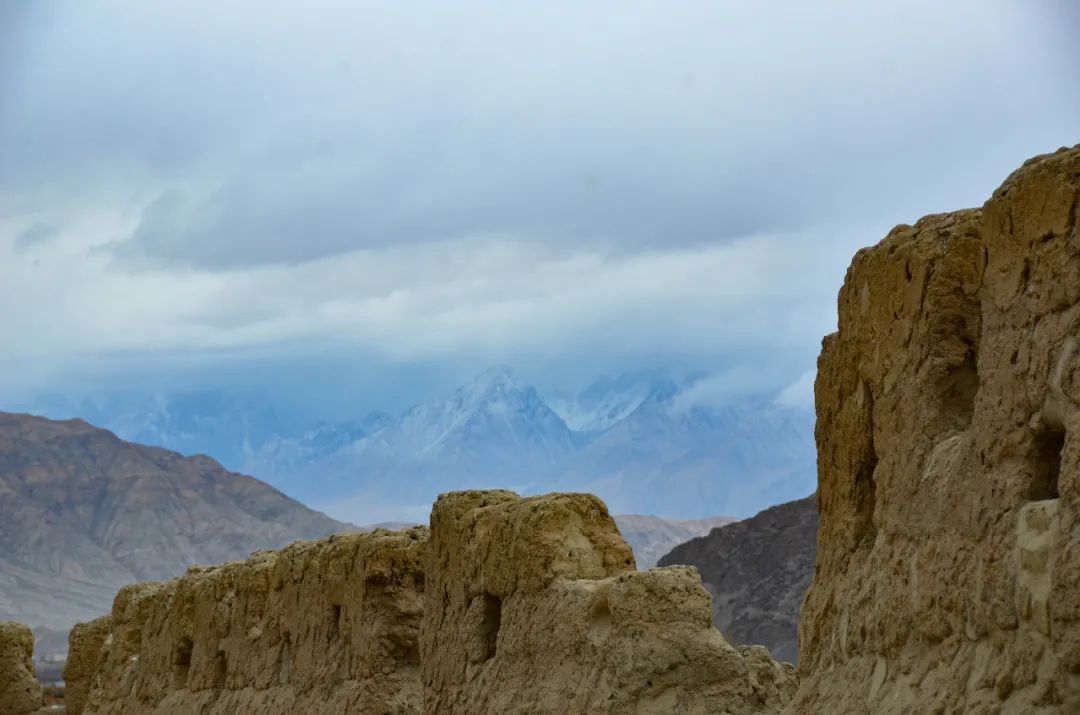
The climate in southern Xinjiang is harsh, with deserts, Gobis, snow-capped plateaus, and endless mountains. No one would have thought that many years later, Kashgar would be getting better and better. "If you don't reach Kashgar, you don't count in Xinjiang" has also made Kashgar's tourism industry popular. More and more people are getting to know this ancient city in the desert, being attracted to it and even taking root in it. Different cultures are intertwined, ancient and modern are merging, and this city will become more and more attractive.
"Building roads is really hard. I don't know how many people died in order to build roads." Master Yin muttered on the way to the Panlong Ancient Road. "Before this road, it was all Gobi desert and mountains, and the sky and the earth could not cry. spiritual”
Panlong Ancient Road, a newly popular highway, and even the slogans on the roadside say, "Today I have gone through all the twists and turns in life, and from now on my life will be smooth." Some people have counted more than 600 turns in total, which in my opinion is just There are only "turn left" and "turn right". To build roads on these steep cliffs, the happiness of a generation has been sacrificed. Today, we can stand on this Panlong Ancient Road and marvel at the miraculous craftsmanship of nature. It is also because of the efforts of the previous generation. These are the people who have participated in the construction of the Great Northwest. of glory.



The slogan "Go to Xinjiang, go to the place where the motherland needs it most" was once our dream in our youth. There were several teachers who assisted Xinjiang around us, and it was with this sense of mission that we embarked on the road of supporting education in southern Xinjiang.
"Why did you come to Xinjiang? To build the motherland, hahaha," Sisi said while laughing.
"Of course it was hard to get used to at first. The climate here is very dry. I wake up with a dry throat in the middle of the night and a sore throat in the morning. I also have nosebleeds. The dryness of my skin makes me wake up in the middle of the night with itchiness."
"The most difficult thing to adapt to is static electricity. It is so electrostatic that I have psychological shadow. I dare not touch the door handle. I get electrocuted when touching metal. I get electrocuted when handing things to others. The worst thing is when I wash my hands and get electrocuted."
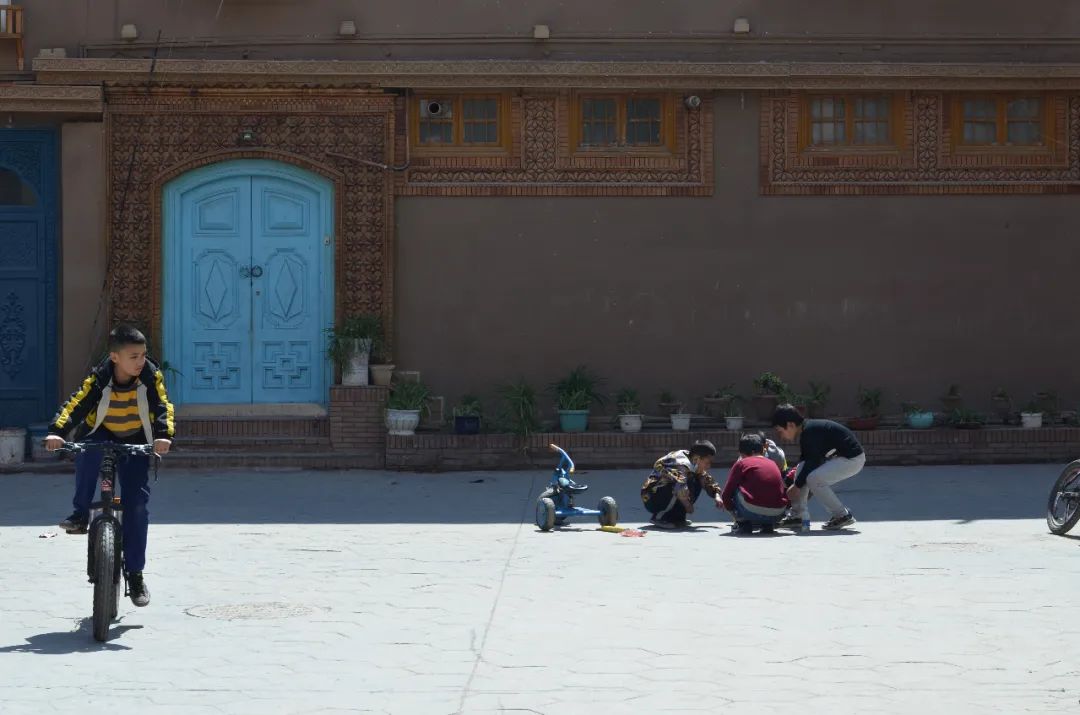

"The happiest thing was doing the physics experiment on triboelectricity last semester. It was the most obvious phenomenon in my teaching career."
When we talked about how the support was about to end and return to Guangdong, classmate Sisi was still reluctant to let go...
"Sometimes I feel that life in rural areas is quite beautiful. When there are no sandstorms, you can see the sky. In Guangdong, there are so many high-rise buildings that you can't see the sky."
"The biggest sense of achievement is that the students like me so much. They surround me like this every day and keep saying, Teacher, I like you so much. Teacher, you are so beautiful. Teacher, come to my house to play. When you come back from vacation, you will be my teacher." Miss you……"
Our generation's aid to Xinjiang is far happier than that of the previous generation. In Kashgar, you can see "xx City Aid" projects everywhere. People live and work in peace and contentment, students learn new knowledge wantonly, and travelers freely travel through the magnificent rivers and mountains. This is what belongs to The honor of this generation of compatriots who have aided Xinjiang.

Pamir Spring

Outside the forest, the doves are singing and the spring rain has stopped, and the apricot blossoms are blooming on the roof of the house in the early morning.
Pamir's spring is full of apricot blossoms, pear blossoms, and plum blossoms... Pamir has a lot of the colors that spring should have, and it is always suitable for heavy makeup and light makeup.
The Pamir Plateau, also known as Congling, has always been an important bridge connecting Central Asia. It was an important passage south to India and west to Afghanistan and Iran in ancient times. Walking along the China-Pakistan Friendship Highway, you will pass snow-capped mountains, lakes, villages, old cities, and see Gonggeer Jiubie Mountain, Muztagh, Baisha Lake, Stone City... and then walk along the valley to reach Xinghua Village Datong, Taer... This is a route that the eyes are busy with, the enthusiastic Tajik people, the kind Muztag, and the gentle Taer Xinghua.



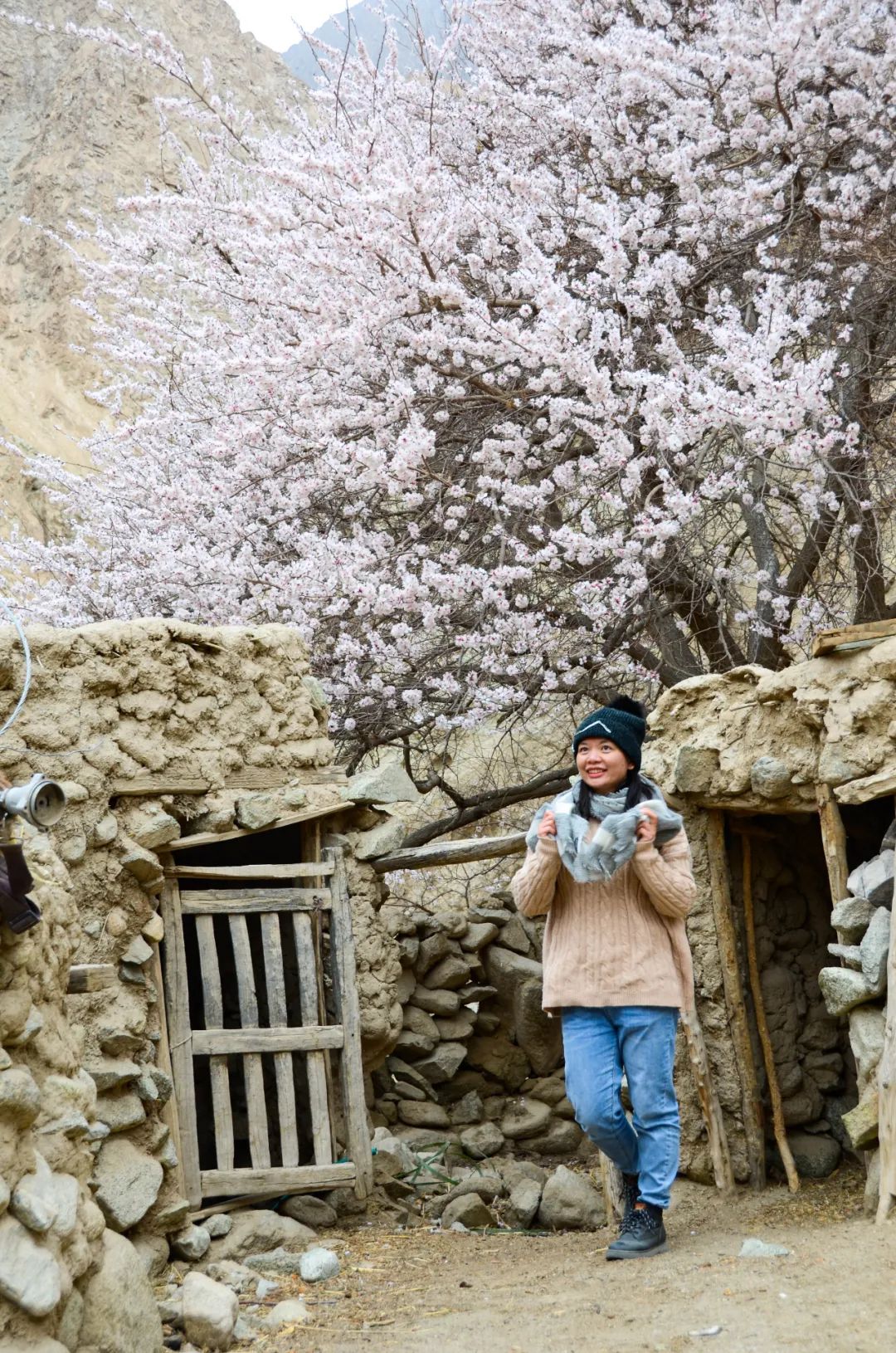
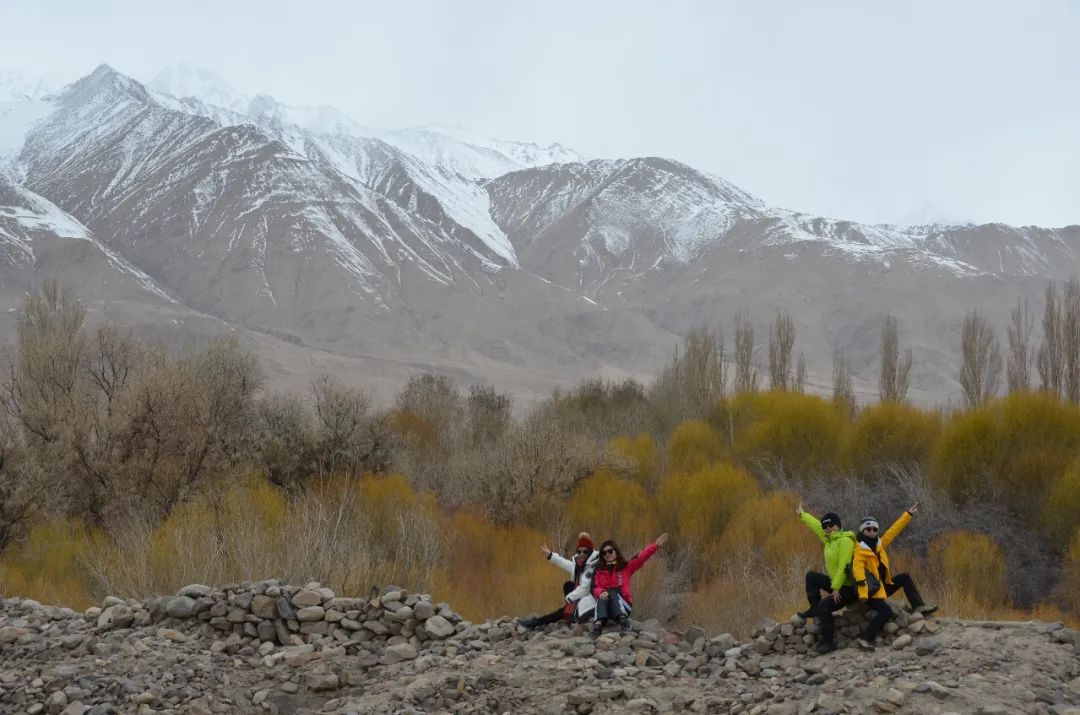
Muztagh, the father of glaciers and the source of all waters, is the most famous. In fact, Mufeng and Gonggeer Jiubie Peak are very close. Standing on Karakul Lake, you can clearly see the two snow-capped mountains. Mu Feng is round as a whole, standing there forever like a loving father. No matter when you come home, he will always be there. The ice on Lake Karakul has melted in April. When the weather is clear, you can clearly see the shape of each glacier. The glaciers split the snowy mountains and formed ravines. I visited twice and recorded the shapes on sunny and cloudy days. Come down. From Kashgar to Mufeng, from an altitude of more than 1,000 meters to a maximum of 4,500 meters, passing through the Danxia Canyon landform to plateau lakes and then to plateau snow mountains, the Danxia Mountains after the rain are even more beautiful. Personally, I think it is even better than the colorful Danxia in Zhangye. .

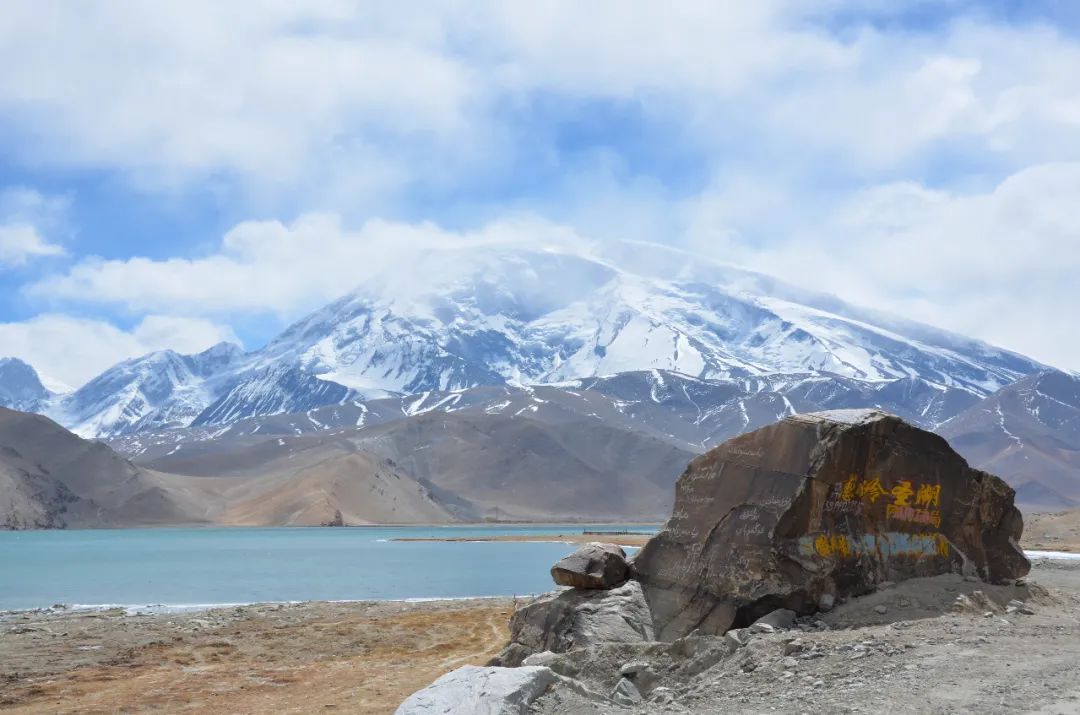

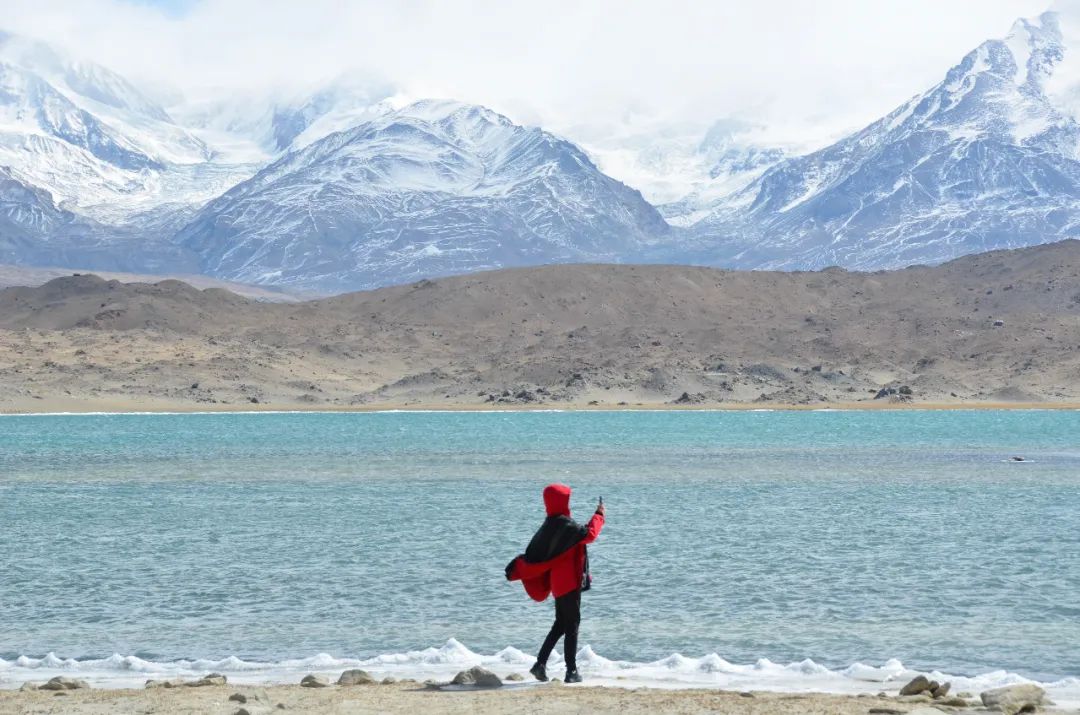


Where does the sand in Baisha Lake come from? Due to strong winds, Baisha Lake has been renovated into a reservoir. It is also due to the change of the original lake shape. After the reservoir was built, the white sand slowly accumulated and turned into the white sand mountains you see now. The lake is beautiful whether it is sunny or sunny. Even on cloudy days, the sky is blue and blue, which is very eye-catching. Karakul Lake is different. It is a common blue-green lake on the plateau. If the weather is good, you can see the reflections of Mu Feng and Gongge Jiubie Peak. In winter, with the blessing of blue ice, the snow-capped mountains become even more beautiful. Holy.
The Tajiks who have lived in the Pamir Plateau for generations are well-deserved protagonists. The Tajiks, who belong to the European race, have three-dimensional facial features like knives and are very handsome. The Tajiks in our country have guarded the Pamir Plateau for generations. The eagle is their totem and Islam is their belief. They settled their homes at the foot of the snow-capped mountains, so they built a stone city and settled their homes in the valley, so the valley The apricot flowers are in full bloom, and the cattle and sheep are running all over the grassland... Because of these lovely people, the Pamir Plateau is full of vitality.







Southern Xinjiang is a magical land. It has experienced thousands of years of wind and rain but its charm remains unchanged. I think of Xuanzang’s words: I would rather die in one step to the west than live in half a step to the east. The southern part of the Western Region is worth savoring.

